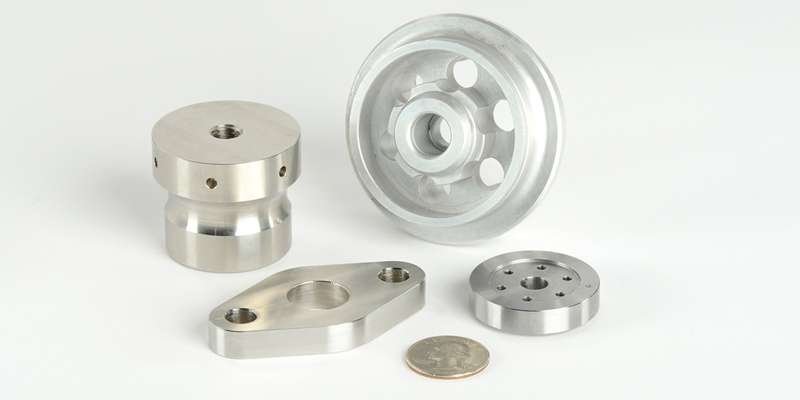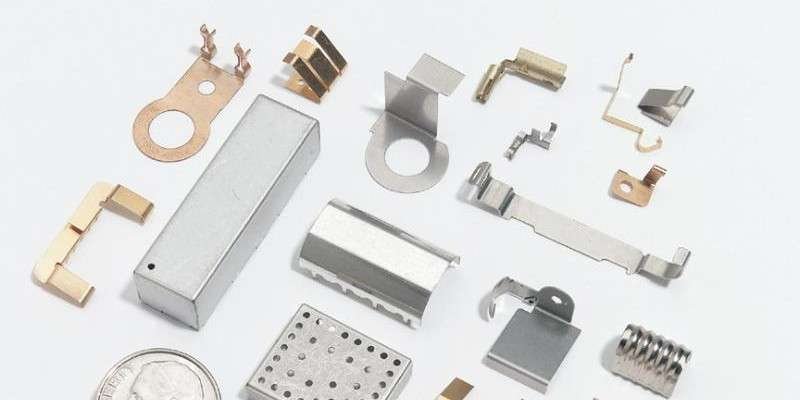Fasteners are an essential piece of hardware that plays vital roles in the design, manufacturing, and assembly of parts. They exist in different sizes and styles, all having specific applications. However, the primary purpose of all fasteners is to join two or more components together. Hence, it’s suitable for parts assembly and manufacturing complex structures.
This article focuses on different types of fasteners, with a detailed overview of their features and subgroups of the different fastener types. Let’s get right into them.
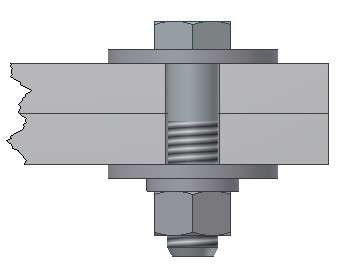
Table of Contents
ToggleHow Does Fasteners Work?
To understand how fasteners work, you should have an answer to the question: what is a fastener? Fasteners refer to an extensive list of tools resembling bolts, screws, nuts, and even nails. Their primary function is to create secure connections between parts, preventing movement and separation.
All kinds of fasteners perform the same role in manufacturing: to hold two or more parts in place mechanically. Each type of fastener has a specific mechanism they employ to carry out their actions.
For example, screws use threaded features to ensure a tight grip on materials, while bolts use another form of fastener – nuts – to create a secure connection. Regardless of the fastener’s design, the aim remains to ensure the tight fitting of the adjoining parts. Also, nails as a fastener do this by penetrating the surface of the parts to create a firm snap-fit joint, providing stability and parts assembly.
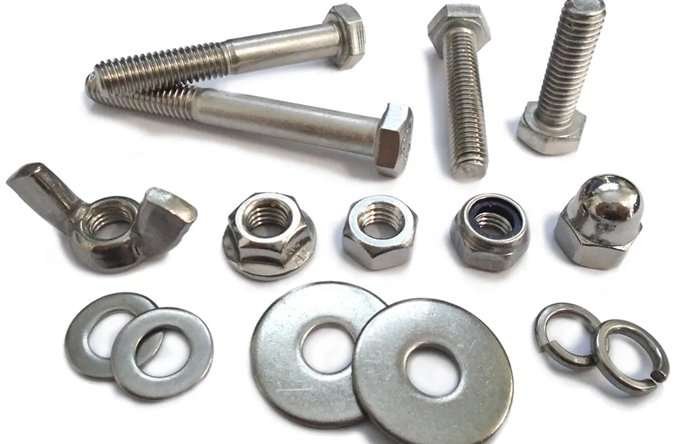
How to Classify Fasteners?
Fasteners exist in two broad categories, namely:
- Permanent Fasteners
- Non-permanent Fasteners
As their names imply, the permanent fasteners form permanent joints between parts and can only be separated by breaking off the adjoining parts. On the other hand, non-permanent fasteners result in temporary joints.
Generally, mechanical fasteners, which we will focus on in this article, include those that form temporary joints. You can separate the joint by loosening the connection – the fasteners.
The standard forms of fasteners in manufacturing include:
- Screws
- Bolts
- Nuts
- Nails, etc.
Different Types of Fasteners and Their Applications
While we already discussed the two classifications of mechanical fastenings used in parts manufacturing, this section will explore the different types in detail, including their subgroups under each fastener type.

1. Screws
Screws are the most common type of fasteners used in holding metal pieces together. They feature a full body threading with their heads coming in various shapes. Screws may require internal threading of the parts to create a secure joint. However, these fasteners are self-tapping or self-threading, requiring less need for pre-tapping.
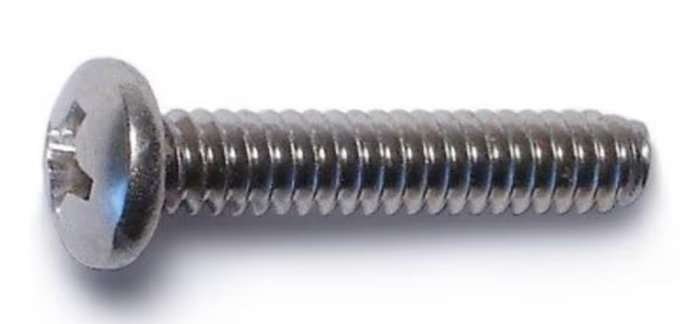
1.1 Machine Screws
These fasteners are often used for machinery work. Machine screws are specific for fastening two or more metallic components. They are usually used in installations with pre-drilled and pre-tapped holes consequently, they may be called threaded fasteners. Therefore, there is no need to create any holes during fitting. However, the machinist should ensure accurate threading to suit the securing of the joints.
1.2 Sheet Metal Screws
These screws possess sharp cutting edges that promote easy cutting and penetration through sheet metals. Sheet metal screws have fully threaded shank to enable good chip removal and friction between the joining parts, forming a secure link. It’s also suitable for joining other materials like plastics and wood.
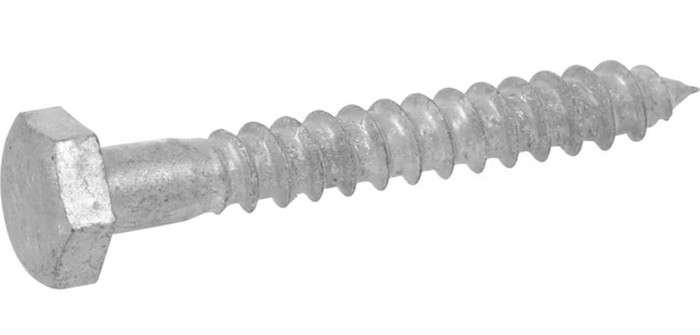
1.3 Hex Lag Screw
These types of screws are specifically used in wood operations and heavy-duty applications. As the name suggests, the hex lag screw features a distinctive hexagonal head, which doubles as the gripping point. Therefore, unlike many other screws, machinists need to use a wrench to drive them into parts, as opposed to a screwdriver. This feature enhanced their torque, creating a potent joint.
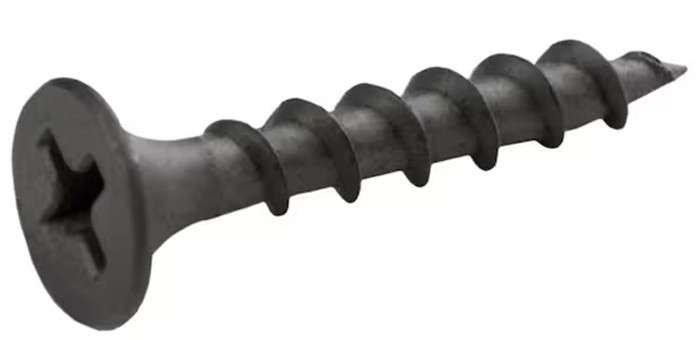
1.4 Dry-wall Screws
These mechanical fasteners feature coarse threads with tapered heads. Dry-wall screws have a fine, delicate tip, permitting easy penetration into the material without causing significant damage.

1.5 Wood Screws
Wood Screws are specific for woodworking, featuring partial coarse threading and a smooth shank that promotes a tight grip. So, they have a sharp-pointed tip for easy penetration of wooden parts.

2. Bolts
Bolts are another popular screw, somewhat similar to screws. In fact, some mistake bolts for screws because they also came with male external threads, usually at the ends. However, bolts are typically for joining unthreaded components. They usually work with nuts, bearing the internal threading that is attached to the base of the bolt, forming a secure connection as they join pieces of material together.
Below are examples of different kinds of bolts used in the manufacturing industry.
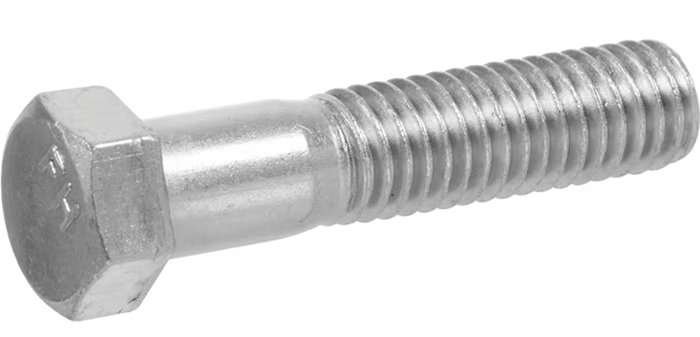
2.1 Hex-head Bolts
As the name suggests, they feature a hexagon-shaped head, promoting the grip with an appropriate wrench. They may feature full threading or an unthreaded section below the head. They are a common choice for machining because they promote easy assembly and disassembly. Also, they encourage easy fastening, even in points that are typically difficult to reach.
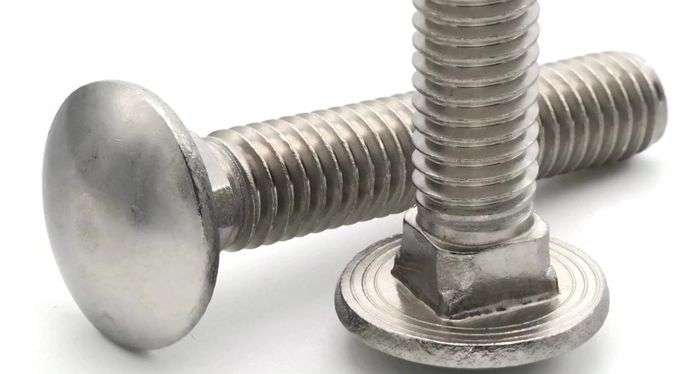
2.2 Carriage Bolts
These threaded bolts feature convex metal heads like a mushroom and square necks. They are a more common choice in fastening wooden parts. They easily fit into the wooden pieces through pressure and are self-locking, preventing turning and ensuring a secure joint.
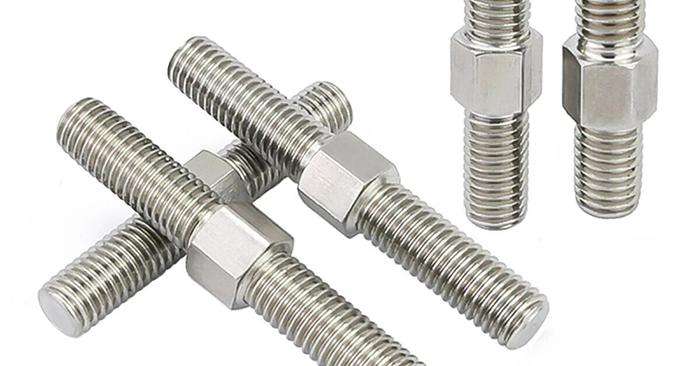
2.3 Double-End Bolts
Double end bolt is an elongated rod with external threading on either end that allows gripping with suitable nuts, forming a secure connection.

2.4 Allen or Socket Head Bolts
This type of bolt features a cylinder-shaped head with hexagonal holes, requiring a suitable wrench – Allen wrench – to fasten it, forming a tight, firm joint.
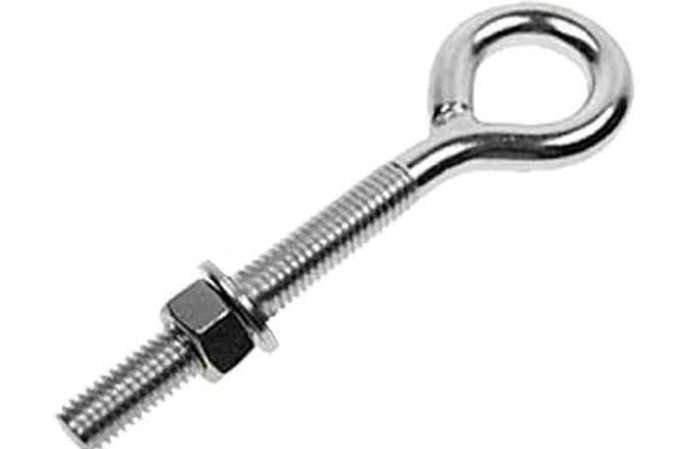
2.5 Eye Bolts
Eye bolts feature a loop, resembling an eye on one end, with the other end having an external thread that locks with an appropriate nut to form a secure link.

3. Nuts
Nuts are fasteners, often acting as a pair to a bolt of similar size. They come with internal threading that the bolt fits into, improving grip, increasing torque, and forming a secure joint. The nut and bolt system effectively connects two pieces of material without needing internal threading, just an aligning hole of appropriate size in both parts.
Like other mechanical fasteners discussed this far, nuts also exist in different forms and shapes. Below are some of the common types.

3.1 Cap or Acorn Nuts
These nuts feature a closed end like a dome covering the bolt’s end, ensuring a secure bolt-nut link and avoiding any bolt protrusion. They are an excellent fit for aesthetic appealing parts.

3.2 Hex Nuts
Like hex bolts, they feature a hexagonal exterior, allowing for easy locking with suitable bolts with a wrench. They are readily available, cheap, and the most common nut metal fasteners.
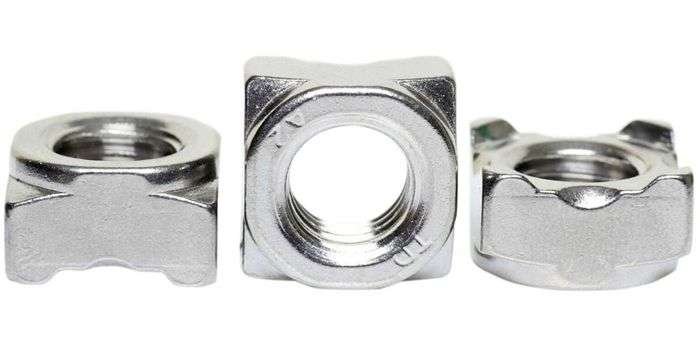
3.3 Weld Nuts
Weld nut is specific for fastening components in areas that are typically challenging to reach. The design is such that one part is to be welded into the surface of the adjoining metal.
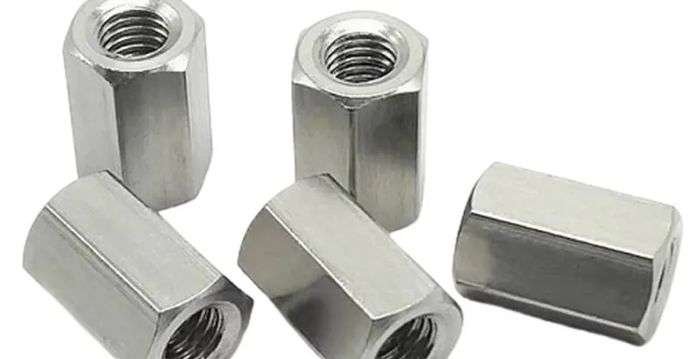
3.4 Coupling Nuts
These nuts are elongated and designed for joining long threaded bolts and rods.

4. Nails
Nails are the oldest form of fasteners used in manufacturing. They form the basis for the other types of fasteners, particularly screws and bolts. While they seem more like screws, having a sharp tip, these mechanical devices do not require any tapping or threading in a material before they perform their fastening action.
They are easier to use, requiring shear force to drive them into the material, forming a stable joint. However, screws are an improvement of nails, creating stronger joints and promoting easier removal.
4.1 Common Nails
This nail type features a thick body shank, providing significant holding power for creating a durable joint between the adjoining components. However, this thick shank easily projects and remains visible after finishing, reducing the product’s aesthetics.

4.2 Finishing Nails
Finishing nails feature a flat square head that easily blends with in the adjoining materials, promoting the appearance.
4.3 Box Nails
Box nails feature a diamond tip and head for easy penetration. They are a common fastener in steel constructions.
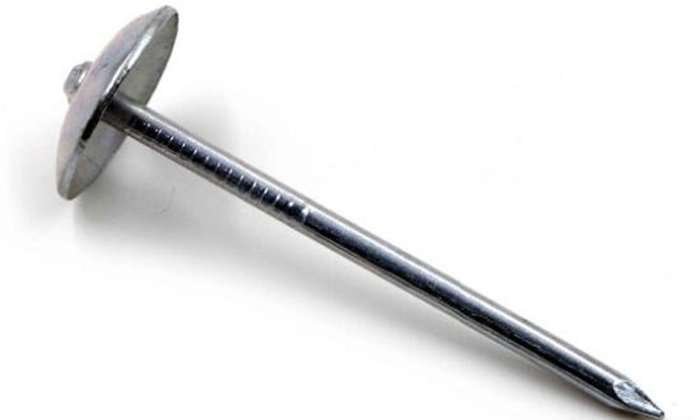
4.4 Roofing Nails
These nails feature a broad head, which is easily seen. They are usually corrosion-resistant to ensure durability.
5. Other Types of Fasteners
Besides screws, bolts, nuts, and nails, there are other practical fasteners for various applications in the manufacturing industry.

5.1 Washers
Washers are disc-shaped thin plates with holes in their center, serving as a spacer or a locking device. They are often used in conjunction with bolts and nuts. It also helps to dampen vibration, reduce friction, or act as a load distributor. What’s more, washers help to protect the surface of the adjoining components by preventing direct contact with the actual fasteners.
Like other fastening devices we’ve discussed, they exist in different forms.
- Plain Washers: These washers help to separate the adjoining parts from the bolts or nuts, preventing the surfaces from losing their aesthetic coatings.
- Dock Washers: As the name suggests, dock washers are super-duty washers. They are thick washers often used in building ducks and construction works.
- Flat Washers: They are standard flat discs that aid even load distribution, friction, and vibrations.
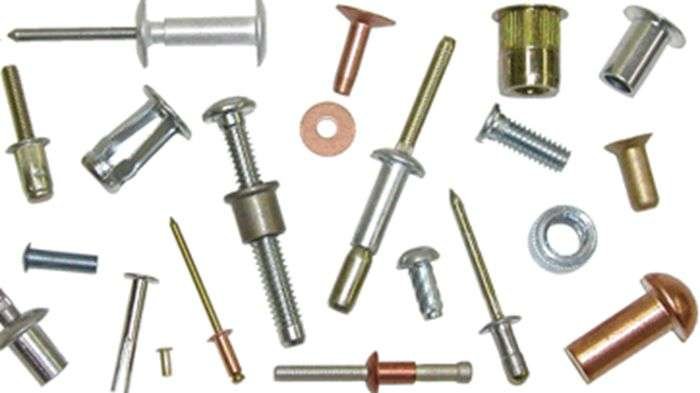
5.2 Rivets
Rivets are lightweight fasteners with smooth shafts and no threads. They are the primary permanent fasteners used for manufacturing purposes. They are usually cylinder in shape, resembling screws and bolts; however, it features a distinct head and a tail at the other end.
Typical rivet types include:
- Blind rivets
- Solid rivets
- Solid rivets
- Tubular rivets, etc.
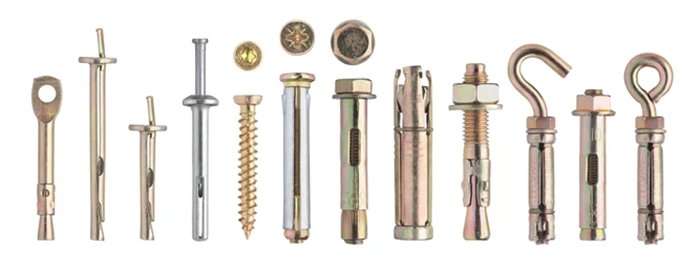
5.3 Anchors
Anchor fasteners perform functions similar to those of a ship anchor. They are used to connect objects to a base material, such as a drywall or concrete.
Typical examples include:
- Internally threaded anchors
- External threaded anchors
- Wedge anchors
- Screw anchors, etc.
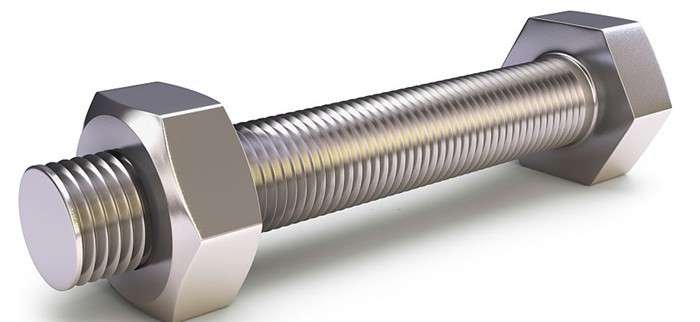
Summary Table for Fastener Types
The table below summarizes the different types of fasteners used in the manufacturing industry, including a review of their features and specific subtypes.
| Fastener Types | Features | Specific Names Included |
| Screws | Possess distinct head shapes and features, each having other applications. | Machine screws, hex lag screws, sheet metal screws, wood screws, etc. |
| Bolts | Possess external threads that lock into the internal threads of the nuts to join components together. | Hex-head bolts, carriage bolts, double-headed bolts, etc. |
| Nuts | Possess internal threading to engage with bolts to create a firm joint. | Cap nuts, weld nuts, hex nuts, etc. |
| Nails | It requires shear force to drive the nail into the adjoining piece. | Common nails, box Nails, roofing nails, etc. |
| Standalone fastener with no need for other fastening devices. | ||
| Rivets | Create permanent joints. Generally lightweight with no threading. | Blind rivets, solid rivets, etc |
| Washers | Acts as an interface between two fasteners (such as bolts and nuts) and the adjoining materials. | Plain washers, dock washers, etc. |
| Anchors | Connects the adjoining materials to a base material such as a drywall. | Internal and external anchors. |
Common Materials Made of Fasteners
Generally, fasteners like bolts, nuts, screws, and nails are manufactured using hard materials. Because of the applications of mechanical fasteners, the material used in creating them must have high mechanical properties, particularly strength. Also, even though hard, it should be less brittle and have good chemical properties, such as resistance to corrosion.
The standard material for creating fasteners is steel, mainly carbon steel. Other metals for creating fasteners include stainless steel, brass, bronze, etc. Below, we explore the standard materials for making mechanical fasteners.
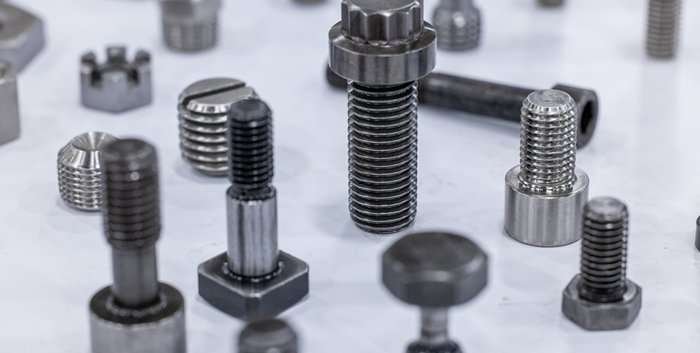
Steel Fasteners
Steel is the go-to material for creating metal fasteners, accounting for up to 90 percent. This alloy is the go-to choice metal for fabricating metal fasteners because of its mix of strong physical, mechanical, and chemical properties.
This material may be used in the plain alloy form or enhanced with suitable surface treatments, such as galvanization, by coating with zinc. Other processes like heat treatments and coatings, such as nickel or chrome coatings, will also prove effective for enhancing the properties of steel metal fasteners.
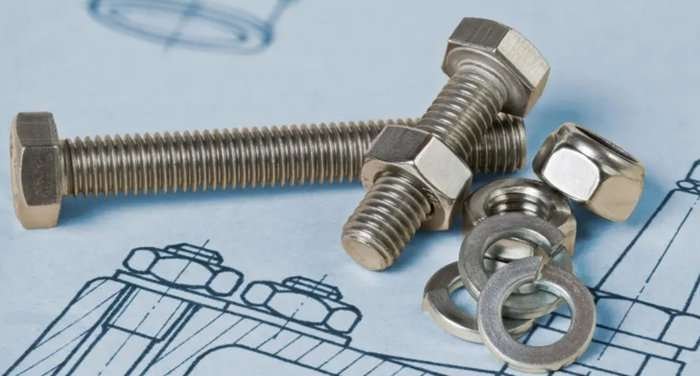
Aluminum Fasteners
Aluminum isn’t as strong as steel. However, it’s a lightweight metal with considerable strength with more corrosion resistance. The combination of both features makes it a mainstay in the manufacturing industry.
These metal fasteners are a good choice for part assembly with lightweight specifications. Aluminum fasteners’ shiny and aesthetic appearance also makes them a suitable material for fabrication that requires a visual appeal. Moreover, manufacturers can combine it with other appropriate elements, like zinc, magnesium, copper, etc., to reinforce its mechanical properties.
Stainless Steel Fasteners
Like steel, stainless steel is essentially an alloy of iron and carbon. However, it has a lower percentage of carbon. Instead, it contains more significant amounts of elements like chromium, significantly increasing its corrosion resistance. Still, the alloy affords its fasteners significant strength, making them durable and maintaining the structural integrity of the fabrication. These features suggest that stainless steel fasteners are ideal for application in harsh environments.
What are the Benefits of Using Fasteners in Part Manufacturing?
Reading this article thus far, you should already have insights into the benefits of fasteners in parts manufacturing. They are integral for joining pieces of a part to make a larger whole. Here are some benefits of using fasteners in part manufacturing.
Hold Parts Together Correctly
Fasteners possess precise design and specific functionalities, ensuring they correctly hold and secure adjoining parts. These mechanical tools are generally reliable. They ensure that these components are in place, preventing unintended movements or separation and guaranteeing structural stability of the final assembly.
Design Flexibility and Assembly
Fasteners provide designers and OEMs more flexibility, allowing for a more systematic and streamlined assembly. These fasteners allow for more design options for creating complex products, reducing assembly time and risks of machining errors. It also helps to improve overall manufacturing efficiency and promotes easier repair of faulty parts.
Easy Transportation
These mechanical fasteners promote the easy disassembly and reassembly of components, which helps to streamline the transportation of larger structures. Manufacturers can create these large-sized products in different pieces, simplifying logistics and reducing chances of damages during transport, then assemble them at the needed destination.
Reduce Manufacturing Cost
With fasteners, manufacturers don’t have to purchase larger manufacturing equipment to manufacture large structures. These tools streamline the design for the assembly of smaller components to create your desired large product. They also reduce material wastage; manufacturers just make small holes in parts to suit the joining of different components, which may also aid in optimizing production workflows.
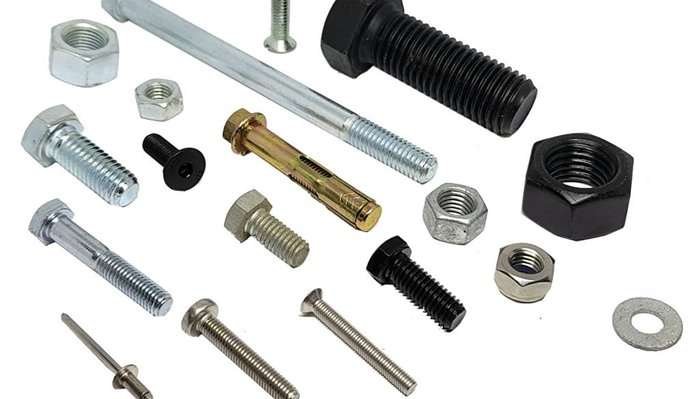
How to Select the Right Fasteners for Your Applications?
While there are different kinds of fasteners for part fabrication, selecting the right one may prove pivotal to the success of your project. Below are the considerations to ensure you make the right choice.
Intended Application
The first thing to consider when selecting a faster is if it will suit the demand of the application. Besides the broad distinction of fasteners, each group has other subtypes. For example, bolts are generally used in bridge construction and heavy machinery assemblies. On the other hand, screws are a more popular choice in woodworking, electronics and drywall applications.
Material
Most fasteners are made of steel because of its superior mechanical properties compared to many other materials. However, it isn’t as corrosion-resistant as aluminum or stainless steel. Therefore, using stainless steel or aluminum fasteners for harsh environments is better.
Thread Type
Threading is another factor to consider when selecting a faster type. Threads may influence the intended application. For example, coarse threads ensure quicker assembly of parts, while fine threads may take longer assembly time. However, the finer the threads, the more revolutions, and interaction between the fastener and the components, ensuring more secure connections and joints.
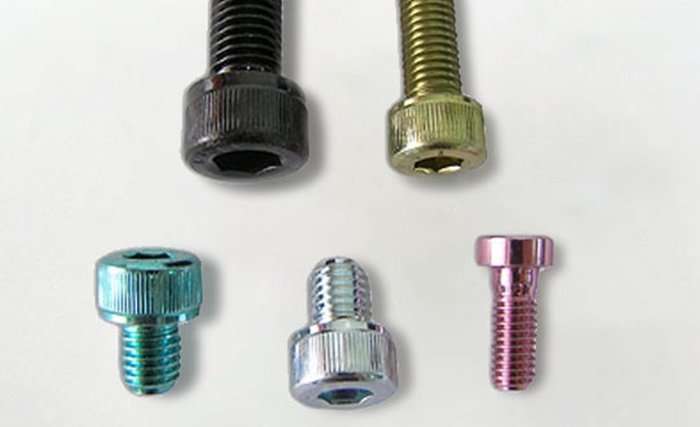
Different Coatings for Fasteners
While most fasteners are manufactured using materials with incredible mechanical properties and resistance. However, these fasteners soon lose some of their features upon exposure to harsh environmental conditions, reducing their performance and durability.
Therefore, OEMs improve these mechanical tools by providing them in various coatings to enhance their resistance, particularly to corrosion.
- Zinc Coating: Coating metal parts, such as screws, bolts, and nuts, with a layer of zinc, uses the process of galvanization. It is cost-effective and enhances the corrosion and oxidative resistance of these fasteners.
- Nickel Coating: Like zinc coatings, it improves the fasteners’ corrosion resistance, making them more visually appealing.
- Chrome Coating: This gives the fasteners a polished finish, improving their aesthetics. Also, it increases the mechanical and chemical properties, increasing their resistance to wear and corrosion making them more durable.
- Phosphate Coating: They aid in increasing lubricity, paint adhesion, and corrosion resistance of the fasteners.
- Black Oxide Coating: This involves coating the surface with a dark material, improving its resistance yet providing a decorative finish.
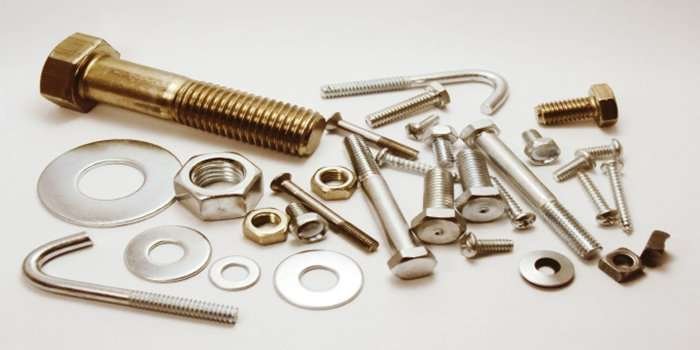
General Applications of Fasteners in Manufacturing
The applications of fasteners are vast, ranging from general manufacturing purposes to household uses. Below are the uses of these mechanical devices in various industries.
- Automotive: connection of various engine parts, including chassis, body panels, and overall vehicle assembly.
- Aerospace: connecting wings, fuselage, and engine components.
- Electronic Manufacturing: securing various components such as circuit boards.
- Woodworking and Furniture: Nails, nuts, bolts, and screws are essential in roofing, furniture assembly and other wooden operations.
- Construction: structural assembly and securing frameworks.
Conclusion
The uses and applications of fasteners cannot be overemphasized. These tools are generally small but significant for various manufacturing purposes. They aid in streamlining the production process and making it easier to create large and complex structures.
FAQs
What is a fastener?
A fastener is a mechanical tool that allows the joining and affixing of two or more components together. They are integral to virtually all forms of machinery, as they aid in joining various parts and components together.
What are the common types of fasteners?
The common types of fasteners used in part fabrication include bolts and nuts, screws, nails, rivets, washers, etc. Each fastener type has a unique specification that suits its functions in parts assembly and fabrication.
What is the function of fasteners?
The main functions of fasteners include holding parts and components together ensuring structural integrity. They allow easy assembly and disassembly of parts, enabling easy fabrication of larger and more complicated products.

